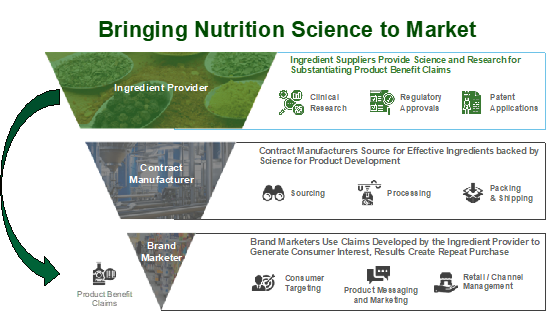Greg Horn’s business of nutrition: Ingredient science and SupplySide West
In his “business of nutrition" column, William Hood & Company's Greg Horn highlights trends from SupplySide West, as well as the scientific work of the supplement industry in researching ingredients and bringing clinically proven ones to market.

In 1633, Galileo Galilei was placed under house arrest for telling the world that his observations and calculations proved the earth rotated around the sun. Almost four hundred years later, we are all beneficiaries of Galileo’s heresy.
His imprisonment marked a turning point in the development of civilization, when the humility of scientific method replaced the arrogance of the “we know because we’re older than you and in charge” method of gaining knowledge. The scientific method is as powerful as it is humble: We assume we are wrong (the null hypothesis) and then gather and analyze measurements to prove or disprove our hypothesis. Its widespread adoption is possibly the greatest single advancement in humankind’s history.
The nutrition ingredient business is also powerful yet humble. Over the past several decades, explosive growth of the consumer nutrition category has been driven by the humble hard work of actually proving what works with science. Most of this work is done by the intelligent and motivated people working in the ingredients segment of the nutrition industry.
These people scour the labs, forests and oceans of the world to source bioactives, connecting the dots from traditional use or assay screens to positive benefits for health, writing patents to articulate and protect their inventions and designing and conducting clinical trials to prove their ingredients work, publishing results so that the findings are popularized and bringing the resulting ingredient to market at a cost per day that works for the consumer.
This is the science of what’s inside, and the importance of this work cannot be underestimated. Clinical studies on humans create claims. Claims create initial consumer demand in niches. With the right claims and marketing, initial consumer demand creates mainstream consumer demand with broader distribution of products in multiple convenient and delicious forms.
Collagen is an excellent case study. When I started working at GNC in 1989, we sold collagen as a joint health product. In the early 2000s, some collagen consumers realized it also helped with their gut health.
But the real breakthrough came in 2014 when a German study sponsored by Gelita found collagen peptides (their differentiated form of collagen) had significant benefits for skin. The collagen beauty market was born with this study.
Since 2014, the science of what’s inside enabled enormous growth in collagen for beauty. Collagen is now in everything from pills and powders to beverages, coffee creamers, and even cookies—all with health benefit claims enabled by human studies.
Today, there is a robust ecosystem of science-based ingredient companies working together with academic and commercial researchers, intellectual property attorneys, contract research organizations, testing labs, and growers and harvesters to bring clinically proven ingredients with supportable health benefits to our market.
Galileo would be proud.
Bringing nutrition science to market
So who is conducting this research? Every now and then, a consumer brand will do research on its own finished product, but the typical process for bringing science to market in the nutrition industry is led by the branded ingredient companies. It starts with the hard work of discovering, sourcing, patenting and conducting animal and human clinical research to validate safety and a benefit for human health.
This heavy lifting is almost always done by the ingredient companies, on their specific ingredients, and it is the foundation of the nutrition industry. I have always admired the ingredient companies in this industry because they do highly valuable and fundamental work for the lowest share of what the consumer eventually pays.
The majority of nutrition brand marketers are entirely consumer-focused, identifying market opportunities and then searching for contract manufacturers to put ingredients into bottles for them. Everyone has an important place in this ecosystem, but it all starts with the ingredient provider proving its ingredient is safe and does something good for health.
That’s what the ingredient companies give to the brand marketers to put on their labels and in their advertising. And nutrition is much more than just pills, powders and gummies. We are seeing an explosion of interest amongst the food and beverage giants for developing and selling mainstream foods and beverages with proven functional ingredients inside. Today, for example, Whole Foods Market devotes 3-4 times the shelf space to probiotic beverages and foods than it does to probiotic supplements.

Slide above provided by William Hood & Co.
SupplySide West: The ingredients world Super Bowl
SupplySide West was jam packed and highly active in 2023, with crowds in the aisles of the tradeshow floor, lines at the restaurants in the mornings, smoke in the Las Vegas casinos and bigger lines at the bars at night.
Below are some ingredient trends spotted at the show.
Mushrooming: Mushrooms remain a dominant theme on the supply side, with many companies offering organic supply.
Berry good: There were a surprisingly large number of berries and berry extracts on display, from elderberries to lingonberries and mulberries.
Liposome more: Liposomes, the little fat bubbles that can enhance bioavailability of active ingredients, were very prominent on the show floor.
China’s back: The Chinese suppliers were back in full force at this show, with rows and rows of booths and hundreds and hundreds of attendees.
Algal sourced: At last, the enormous potential of algae is being tapped for the nutrition ingredient markets, with offerings from fibers to gelling agents / gelatin replacements to fucoidan to omega-3 oils.
Collagen, still: It’s hard to overstate how many collagen suppliers there were on the trade show floor. Apparently, the hunger for collagen continues.
Brain stuff: An enormous proportion of ingredients new to the show this year purported some kind of brain health benefit, from cognition and focus to sleep and mood.
Sugar and salt reduction: Almost every big food company has made a public pledge to reduce sugar and salt in their foods. This year’s show had many forms of sugar and salt reduction on offer, both natural and not-so-natural.
Peptides signaling: Peptides, small but specific strings of amino acids, can act as signaling molecules in the body, backed by research supporting health benefits.
Fiber’s day in the sun: Dietary fibers, probably the master key to digestive health and happiness, are having a resurgence in interest.
Thanks for reading.
Read more about:
Supplement scienceAbout the Author(s)
You May Also Like






.png?width=800&auto=webp&quality=80&disable=upscale)